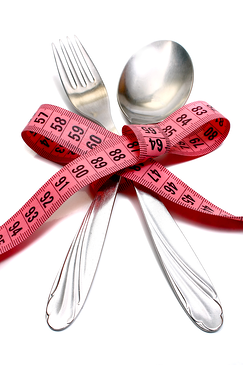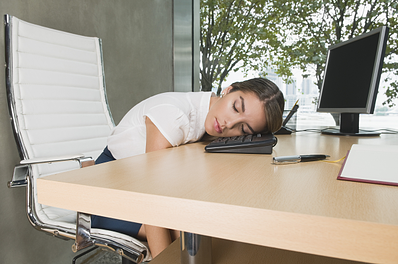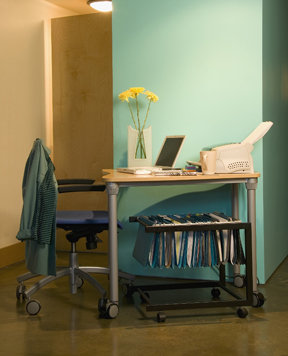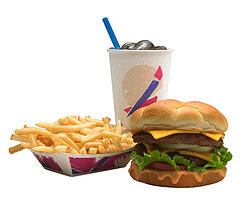This blog was written by Veronica Hofmann. Meet our blogging fitness specialists at the NIFS website.
Many of you have probably heard or read the buzz about the FDA considering a ban on artificial food coloring. There have been warnings of these dyes possibly contributing to ADHD in children. Many parents claim that after their children ingest the dye their behavior changes. The FDA recently voted not to ban these dyes, stating they need to research further as to the possible connection between the dye and hyperactivity.
 Many parents are surprised by this decision—mostly the health conscious who realize that any ingredient that is not natural is just not good for our children. The problem is that most parents who feed their children a diet of whole foods stay away from products that include these dyes already. But there are many people who don’t realize the importance of a proper diet. This makes me think that the bigger problem is education on proper diet, not singling out one specific item.
Many parents are surprised by this decision—mostly the health conscious who realize that any ingredient that is not natural is just not good for our children. The problem is that most parents who feed their children a diet of whole foods stay away from products that include these dyes already. But there are many people who don’t realize the importance of a proper diet. This makes me think that the bigger problem is education on proper diet, not singling out one specific item.
This leads me to the question of whether or not we want the government making decisions on our food. In my opinion it would be a good thing because as a mother who tries her best to keep artificial colors out of my child’s diet there is absolutely no way to control this when they are at school, with friends or grandparents—often the worst offenders! No, I am not in favor of governmental control; but if the ingredient is not doing anything good and is found in kid friendly, cheap, and easily accessible foods, it may not be a bad thing to have it banned from the market.
Will this ever happen? Who knows? So in the meantime it is important to spread the word about healthy diets for everyone! We should start focusing on what to eat rather than what not to eat, and try to make the best nutrition decisions we can. I cringe when my little one bites into a ridiculously colored cake, cupcake, or candy but it is not a normal occurrence so until it is banned we will have to be flexible and pray it does not cause a complete meltdown.
This topic would be a great conversation starter for your worksite wellness program. Get the chatter started and it will travel.

 Every May our NIFS Fitness Management staff celebrates
Every May our NIFS Fitness Management staff celebrates  Like many “alternative therapies” practiced throughout the world today, the jury still seems to be out on fasting and its health benefits. Many claim that it can help reverse diabetes, high blood pressure, and cholesterol; improve the immune system; and help the body heal itself in numerous ways. Others claim that none of these things is proven and that fasting can actually be detrimental to one’s health.
Like many “alternative therapies” practiced throughout the world today, the jury still seems to be out on fasting and its health benefits. Many claim that it can help reverse diabetes, high blood pressure, and cholesterol; improve the immune system; and help the body heal itself in numerous ways. Others claim that none of these things is proven and that fasting can actually be detrimental to one’s health. Many things in life can be hazardous to your health, such as smoking, drunk driving, and too much sun exposure. Many of these things remain in your control, fortunately, putting your health in your hands.
Many things in life can be hazardous to your health, such as smoking, drunk driving, and too much sun exposure. Many of these things remain in your control, fortunately, putting your health in your hands. Too Much TV Shown to Cause Health Problems
Too Much TV Shown to Cause Health Problems Other symptoms of CVS include the following:
Other symptoms of CVS include the following: It’s scary to think about
It’s scary to think about  The time in the lower-right corner of your computer screen reads three o’clock. You’re tired and in need of a pick-me-up. It is too late in the day for a full meal; you are about to head home for dinner in two hours. Your coworker notices you start to drag at your desk and offers some suggestions for a boost in the form of some snacks, a soda, or a cup of coffee.
The time in the lower-right corner of your computer screen reads three o’clock. You’re tired and in need of a pick-me-up. It is too late in the day for a full meal; you are about to head home for dinner in two hours. Your coworker notices you start to drag at your desk and offers some suggestions for a boost in the form of some snacks, a soda, or a cup of coffee.
 r calories and 19 fewer grams of fat. Select any of the grilled chicken wraps for a meal under 300 calories. Choosing grilled over “crispy” will save you a lot of calories and fat.
r calories and 19 fewer grams of fat. Select any of the grilled chicken wraps for a meal under 300 calories. Choosing grilled over “crispy” will save you a lot of calories and fat.